Try our favorite, clean protein powder: See our top pick →
Try our favorite, clean protein powder: See our top pick →
This post contains links through which we may earn a small commission should you make a purchase from a brand. This in no way affects our ability to objectively critique the products and brands we review.
Evidence Based Research To fulfill our commitment to bringing our audience accurate and insightful content, our expert writers and medical reviewers rely on carefully curated research.
Read Our Editorial Policy
Whether you’re looking to lose weight or simply feel more full from the foods you eat, it can be challenging to craft low-calorie meals that are also satiating.
As many low-calorie foods leave you feeling hungry seemingly within minutes after eating them, many people are in search of foods that are both filling and low in calories.
We’ve got you covered with 14 of the most filling low-calorie foods—some of them may surprise you!
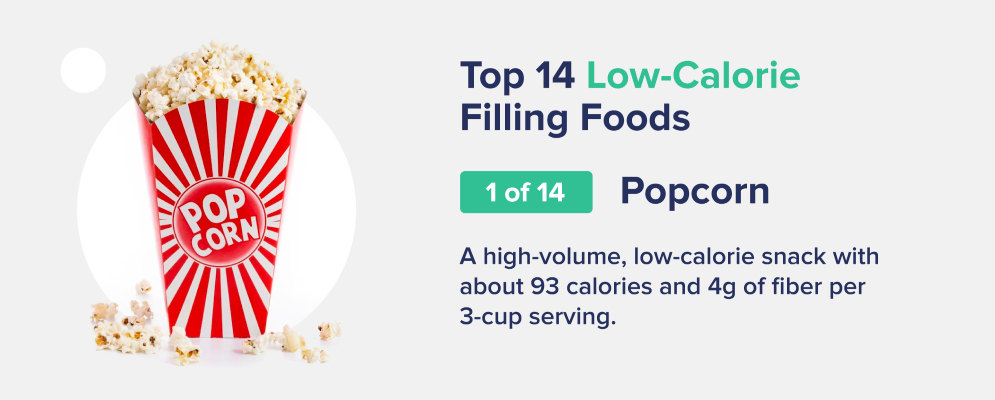
Popcorn is an excellent choice for a high-volume, low-calorie food—but keep in mind that we’re not talking about “butter”-loaded movie theater popcorn here.
Popcorn (ideally air-popped or lightly-oiled versions) is high in dietary fiber, and you get a lot of bang for your buck, as popcorn is a high-volume food with a serving size of three cups.
With about 90 calories and 4g of fiber per serving, popcorn is a filling, low-calorie food—not to mention, it’s also delicious.
If you’re averse to butter-less popcorn, try using an olive oil spray or avocado oil spray that boosts flavor but has significantly fewer calories than adding butter or oil.
Per 3-cup serving (popped):
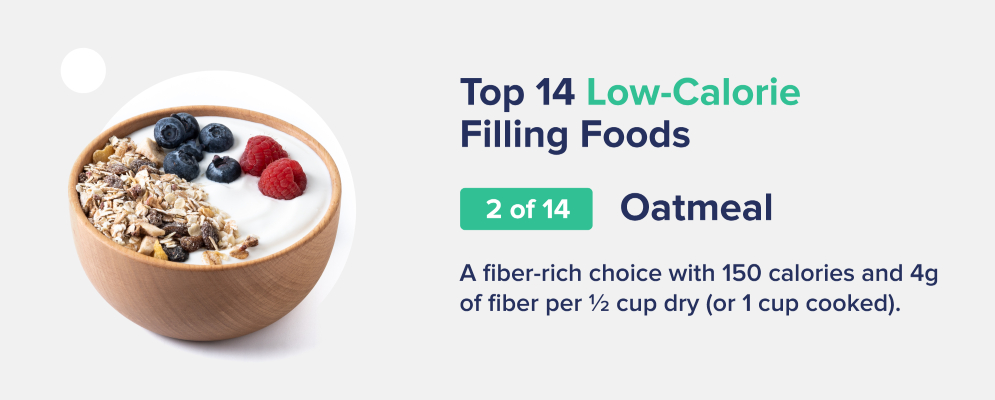
Oats are a great source of dietary fiber and plant-based protein—plus, they contain beneficial nutrients like B vitamins, magnesium, and zinc.
Each cup of cooked oatmeal contains 4g of fiber, primarily consisting of soluble fiber—a type linked to increased weight loss and feelings of fullness after eating.
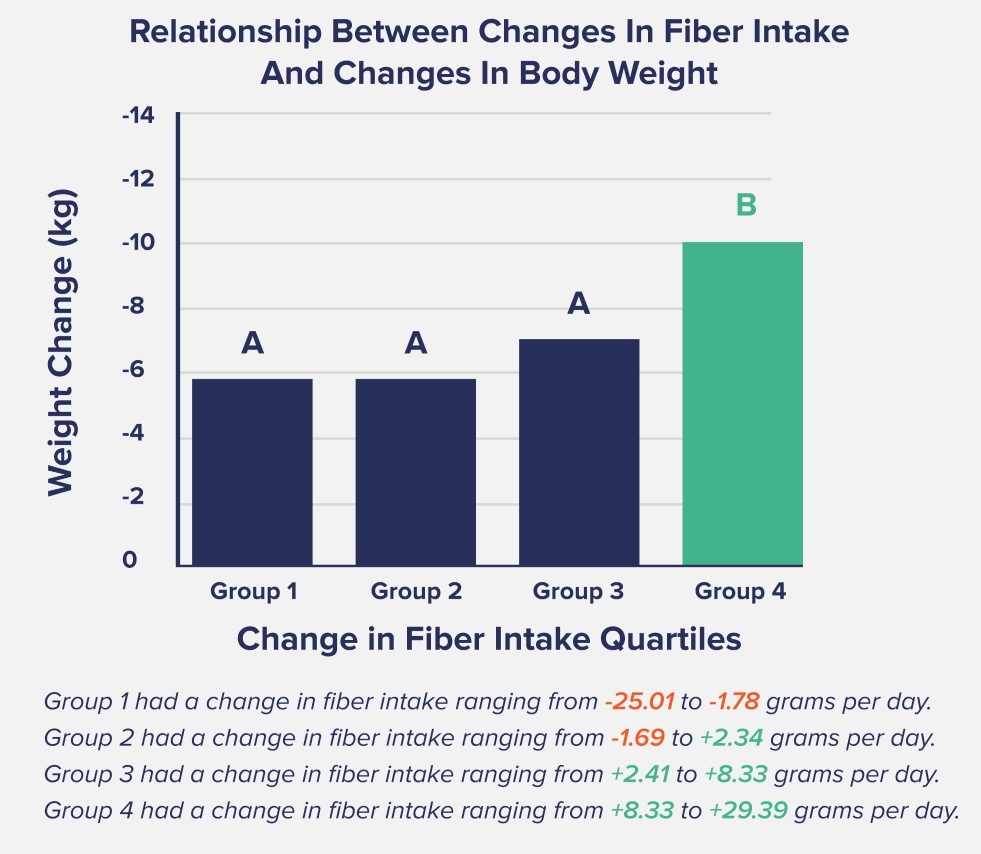
However, remember that adding sugar and toppings to your oatmeal can significantly increase its calorie count, so sticking to sweeteners like monk fruit maple syrup or topping with berries can help keep your oatmeal lower in calories.
Per ½ cup dry (or 1 cup cooked oats):
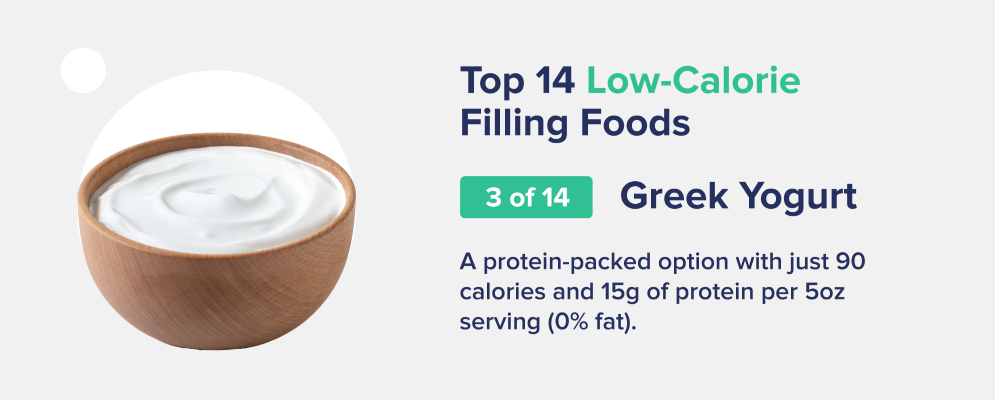
Greek yogurt is a protein-packed powerhouse that can help to keep you full for hours—and with just 90 calories per serving (for the 0% fat yogurt), it’s also a low-calorie option for breakfast or snack time.
Unlike other yogurts, Greek yogurt is strained and more concentrated, therefore making it thicker and higher in protein.
Plus, yogurt contains probiotics—beneficial gut microbes that are thought to contribute to maintaining a healthy weight.
While non-fat Greek yogurt will have fewer calories (about 90 per serving), the 2% fat version is still relatively low-cal, at 120 calories per 5oz container.
Per 5oz serving (0% fat):
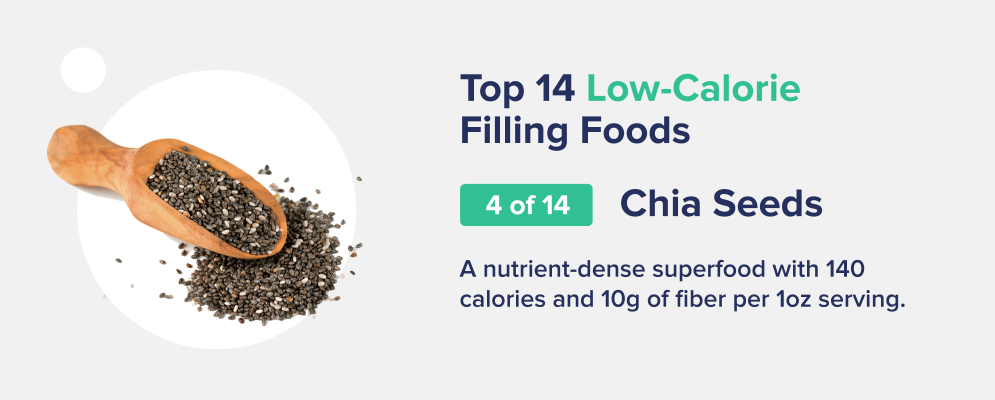
Chia seeds are highly nutrient-dense and loaded with fiber, antioxidants, healthy omega-3 fats, and protein.
As anyone who has made chia pudding knows, chia seeds can absorb large amounts of water, allowing them to expand in your digestive tract and contribute to satiety.
Chia is also rich in soluble fiber, which helps with feelings of fullness and encourages weight management.
Per 1oz serving (about 2.5 Tbsp):
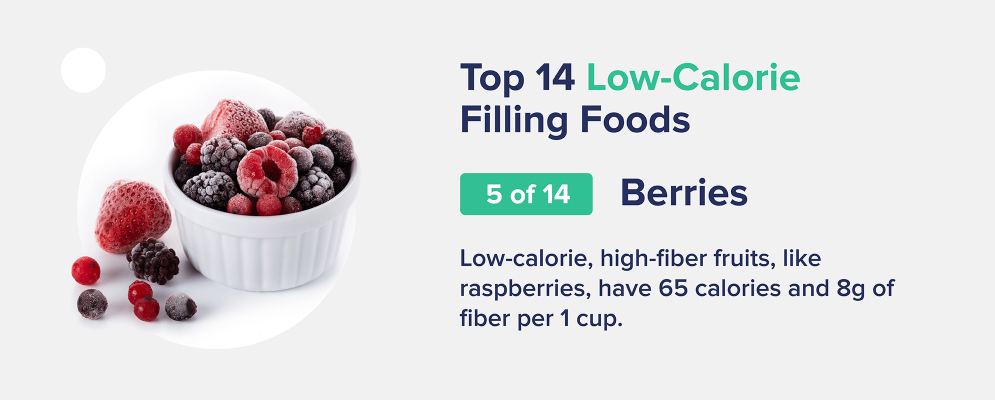
All berries are high in fiber and low in sugar (relative to other fruit), but blueberries, raspberries, and blackberries tend to be the lowest in calories.
Berries are rich in anthocyanins, which are antioxidants that give them their distinctive red or dark blue hues and help the body fight oxidative stress and inflammation—two contributors to unhealthy body weight.
They also contain pectin fiber, which has been found to decrease food intake, body weight, and body fat while increasing levels of two satiety hormones, GLP-1 and peptide YY.
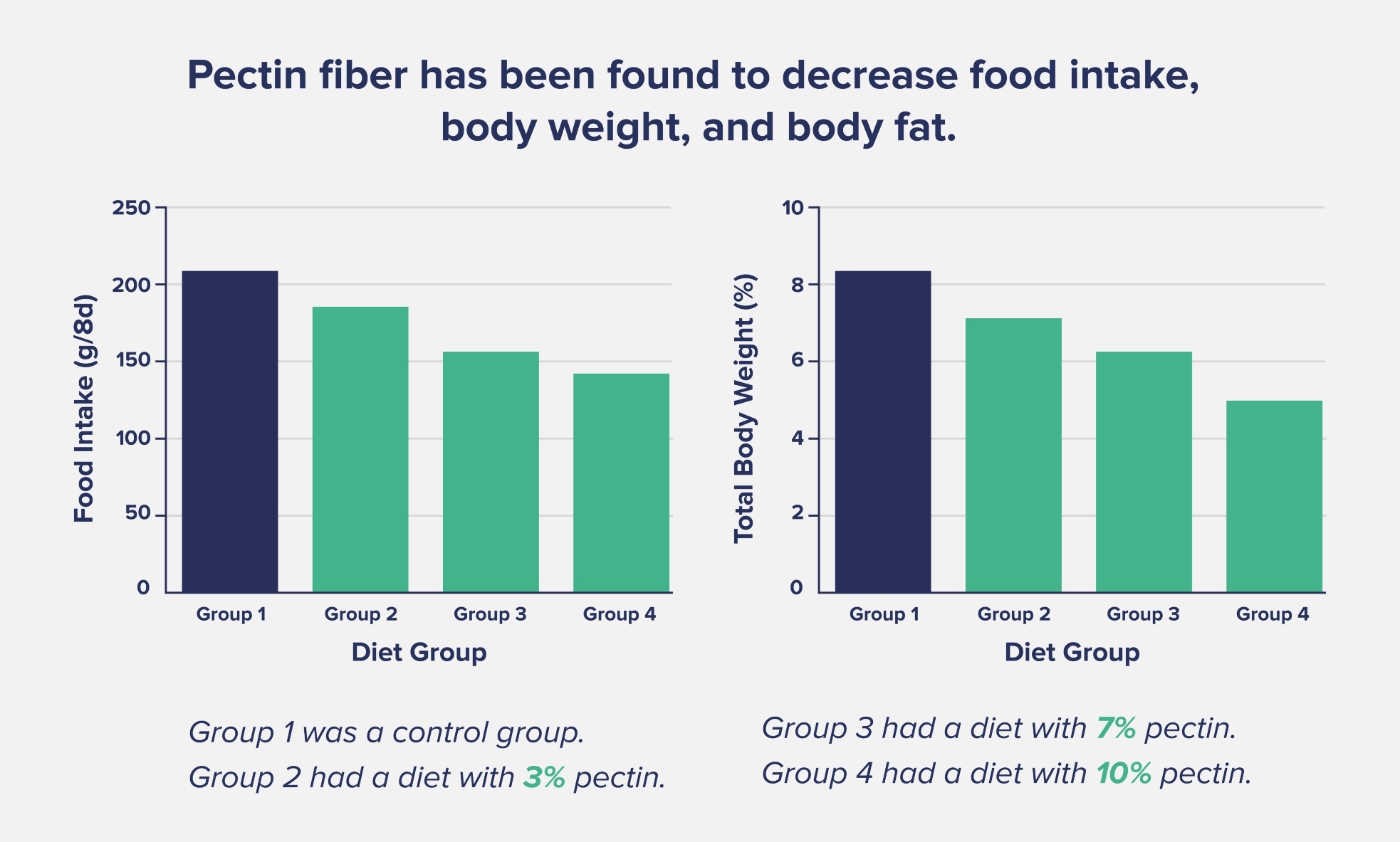
Per 1 cup of raspberries:
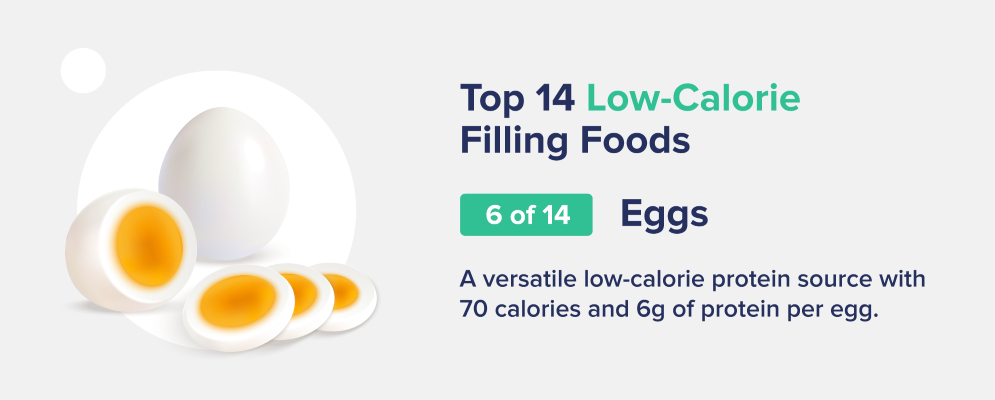
Eggs are well-utilized for their versatile role at any time of the day—plus, they are a low-calorie, lean protein option with plenty of nutritional value.
They contain nutrients not widely available in the American diet, like choline and vitamin D, and provide 6g of protein with only 70 calories per egg.
In research with overweight or obese people, those who ate eggs for breakfast instead of a bagel (with both meals containing the same amount of calories) had increased satiety and ate fewer calories for the rest of that day and the following 36 hours.
Therefore, eating eggs may not only fill you up for the current meal, but the effects could last for a day or longer.
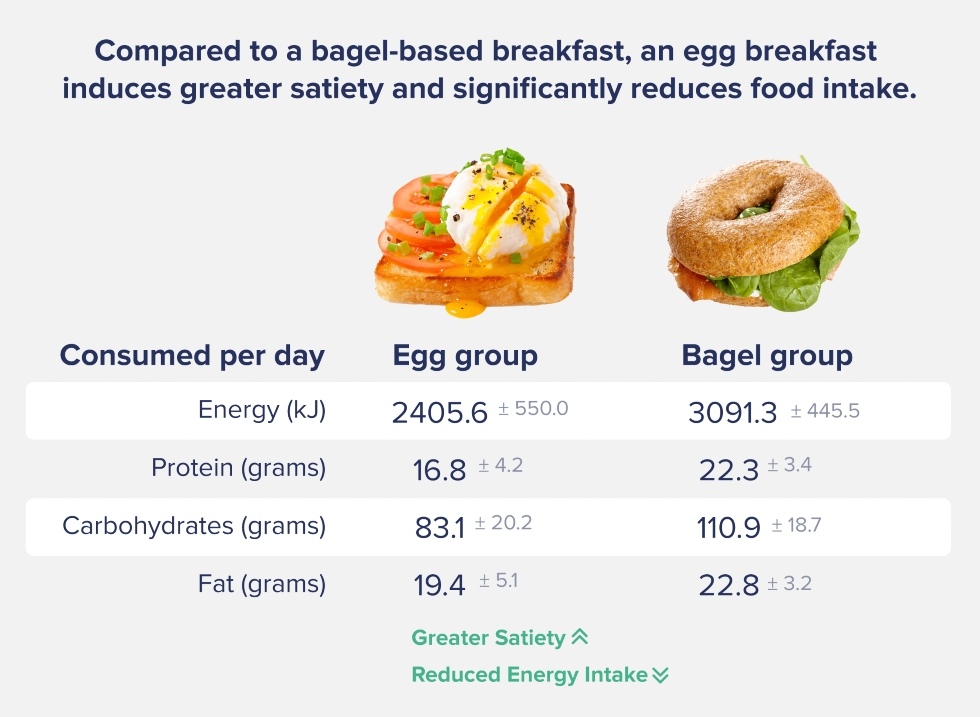
Per 1 egg:
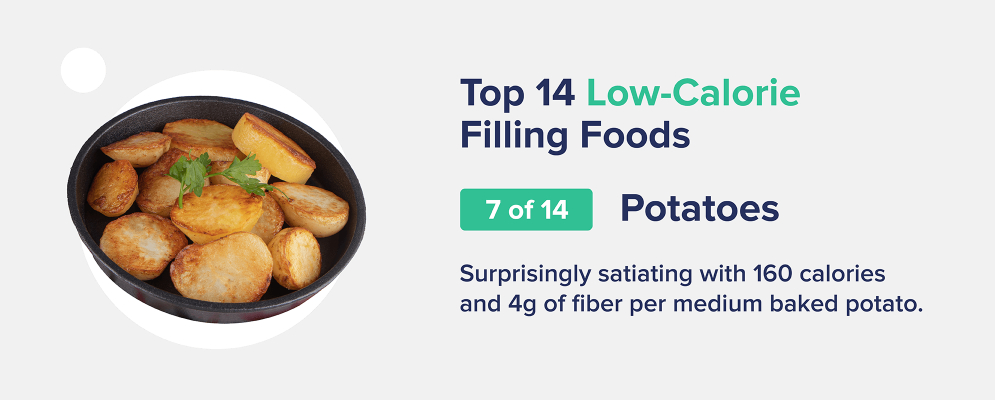
Although potatoes typically aren’t deemed a health food, they are actually one of the most satiating foods out there.
And not all potato dishes are unhealthy—it’s typically what we do to them that makes them unhealthy, like frying or loading them up with fatty dips and dressings.
One study of 38 foods found that boiled potatoes ranked as the most satiating, which was seven times higher than the lowest-scoring food on the list, croissants.
Researchers think that potatoes are so satiating because of compounds called potato protease inhibitors, which may reduce appetite and delay gastric emptying (the rate at which food leaves the stomach), causing you to feel more full from them.
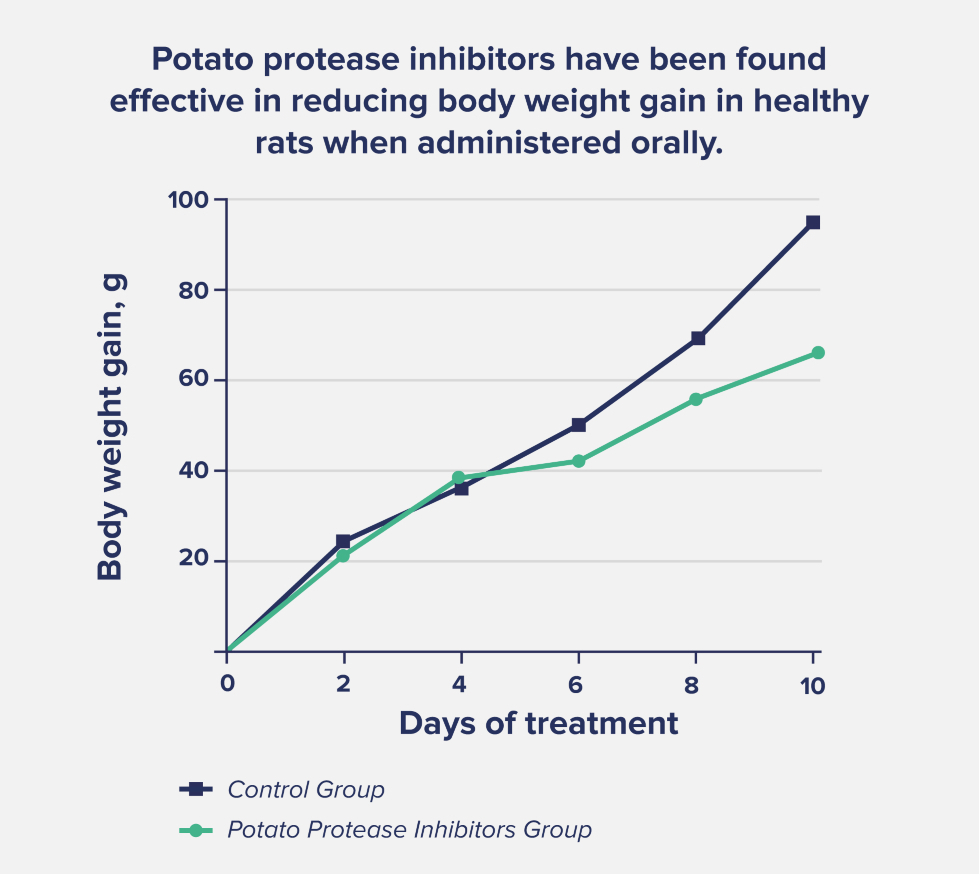
However, keep in mind that what you add to a baked potato (like butter, sour cream, and cheese) can significantly increase its calorie count.
Per 1 medium baked potato:
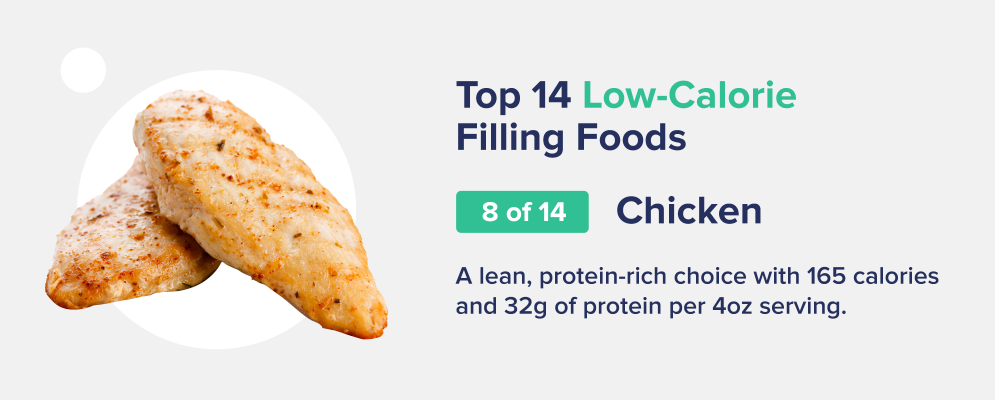
Bodybuilders and people on weight loss diets eat grilled chicken for a reason—it’s a high-protein, low-fat, and low-calorie food that is easily accessible.
For each 4oz serving of chicken breast, you’ll get a whopping 32g of protein, which can seriously boost the satiety factor of your meal.
Research has found that higher protein consumption is linked to appetite reduction, slower gastric emptying, and lower levels of ghrelin—our primary hormone that stimulates hunger.
Per 4oz of cooked boneless, skinless chicken breast:
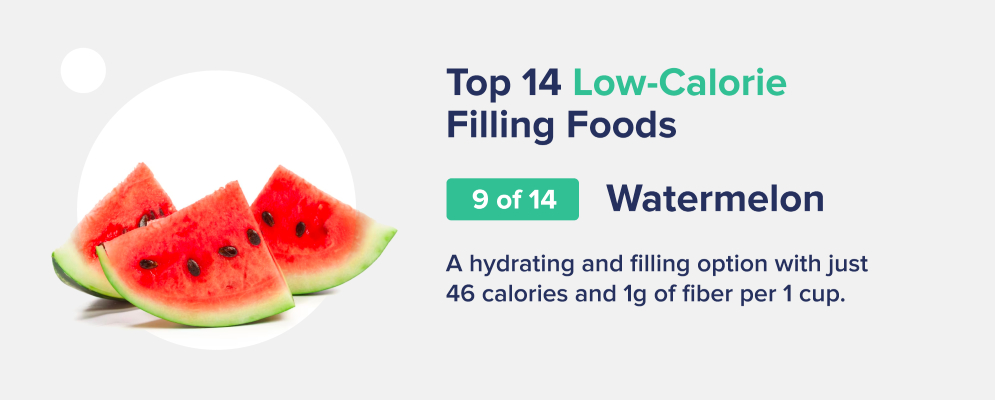
As watermelon contains 92% water (living up to its name), it is one of the most hydrating foods out there—and, therefore, also filling.
Watermelon contains vitamins A and C and the amino acid L-citrulline, which is linked to better blood flow and reduced risk of cardiometabolic disorders.
Research has shown that overweight or obese adults who ate 2 cups of fresh watermelon per day had reductions in hunger, food consumption, and desire to eat, as well as greater reported fullness compared to those who ate the same amount of calories worth of cookies.
Plus, the watermelon eaters also had reduced BMI (body mass index), body weight, and blood pressure after four weeks.
Per 1 cup of watermelon:
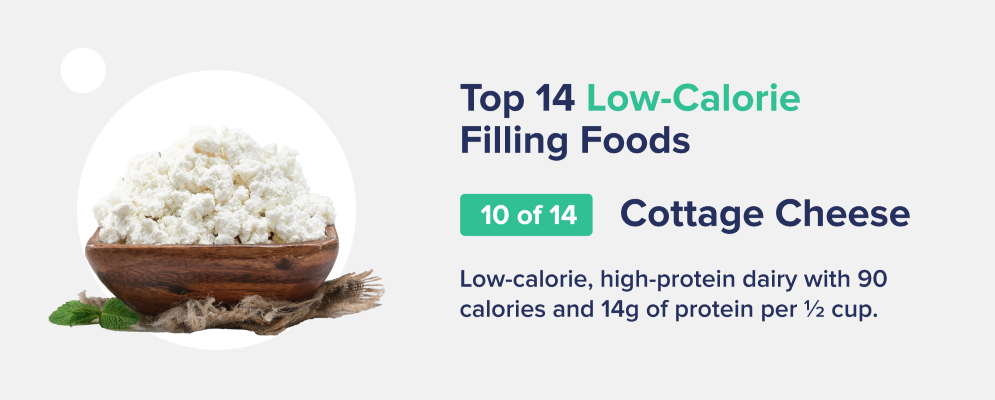
Like Greek yogurt, cottage cheese is low in calories and high in protein—especially nonfat or low-fat cottage cheese.
Research even shows that eating cottage cheese has similar fullness-boosting effects as eating eggs.
Plus, cottage cheese is very versatile and can be added to both sweet and savory meals to pack an additional protein punch.
Per ½ cup of nonfat cottage cheese:
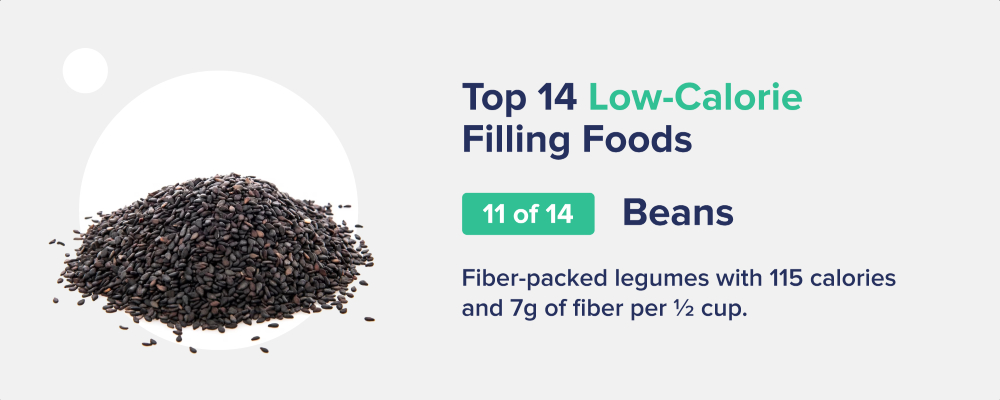
Beans are famous for their high fiber content (they even have a childish song to go along with them that verifies the effects of this), and, combined with their 8g of protein per ½ cup, are very satiating.
While they aren’t the lowest calorie food on this list (at 115 calories per ½ cup), they can have a powerful appetite-reducing and fullness-inducing effect.
It’s thought that the fiber plays a large role in beans’ fullness factor, as seen in this study from 2016.
In this research, young men who consumed a high-protein meal based on legumes (beans and peas) reported higher satiety and fullness with lower appetite and hunger compared to when they ate a high-protein veal and pork meal.
Per ½ cup of cooked black beans:
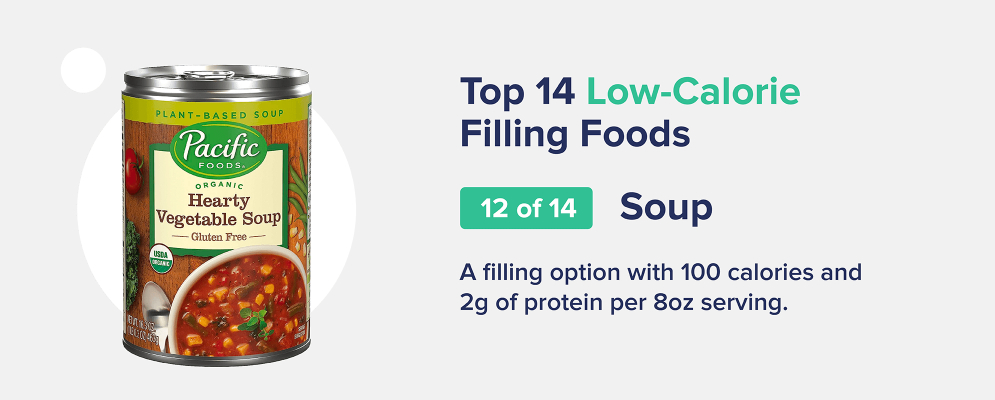
Not all soups fit the bill here—we’re lookin’ at you, clam chowder and cream of mushroom—but broth-based soups are a great satiating food that is not too high in calories.
Broth-based soups—like this organic hearty vegetable soup—will be the lowest in calories, but blended low-fat soups (like tomato) would also fit in this category.
While they are typically low in protein, studies show that eating soup before meals can decrease total caloric intake—like this study, which found that having soup as the first course reduced caloric intake at lunch by 20%, or an average of 134 calories.
Per 8oz of vegetable minestrone soup:
Along the same lines as soup, bone broth is a low-calorie filling food that is high in protein, collagen, and essential amino acids like glycine.
One great example is Dr. Kellyann’s bone broth, which comes in convenient packets to take on the go and mix with hot water or cartons of premade liquid broth to enjoy immediately.
Like vegetable soup, bone broth fills the stomach with liquid—but, it has the extra benefit of 10g of protein per cup to increase its satiety factor further.
Per 2 cups of chicken bone broth:
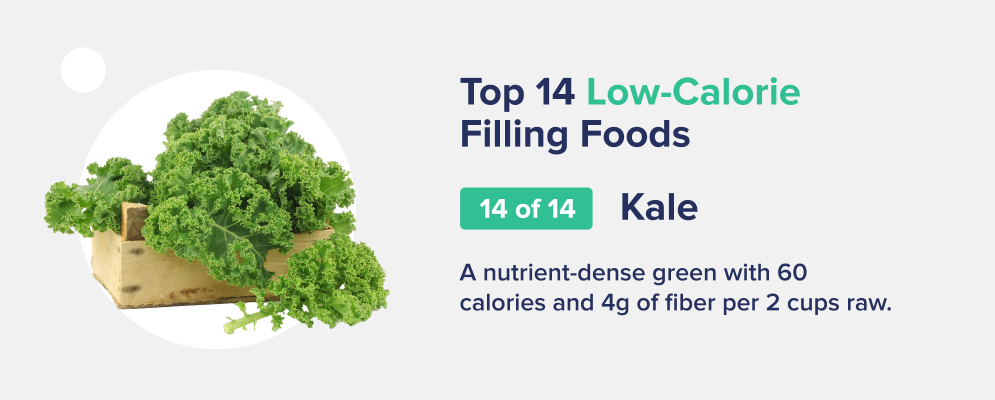
Lastly, kale is a highly nutrient-dense food that also qualifies as low-calorie.
Although you may not think of a salad as satiating, the fiber and protein found in kale, combined with its low volume, can help to increase fullness.
Other leafy greens, like spinach and arugula, are also thought to be satiating veggies—and they contain antioxidants, iron, and vitamins A, C, and K.
Per 2 cups of raw kale:
Most people are not designed to only eat 1,200 calories per day—especially if you are active in any way.
However, if this diet has been medically recommended to you, several foods are higher in volume and lower in calories, which can help you to feel more full.
These foods include Greek yogurt, cottage cheese, beans, broth-based soup, kale, popcorn, oatmeal, watermelon, chicken, berries, chia seeds, potatoes, and eggs.
Any food can have 10 calories depending on how much you eat of it!
Jokes aside, foods that contain 10 calories (at normal serving sizes) include celery, cucumbers, spinach, mushrooms, lettuce, and broth.
Filling foods that are also low-calorie include Greek yogurt, cottage cheese, beans, broth-based soup, kale, popcorn, oatmeal, watermelon, chicken, berries, chia seeds, potatoes, and eggs.
As many low-calorie foods leave you feeling hungry seemingly within minutes after eating them, many people looking to lose weight are searching for foods that fill them up but don’t add too many calories.
Fortunately, many healthy foods are low in calories and high in protein, fiber, or water, which can boost satiety and support weight loss.
Some of the best low-calorie filling foods include eggs, oats, popcorn, Greek yogurt, cottage cheese, bone broth, chicken, and more.
Subscribe now and never miss anything about the topics important to you and your health.